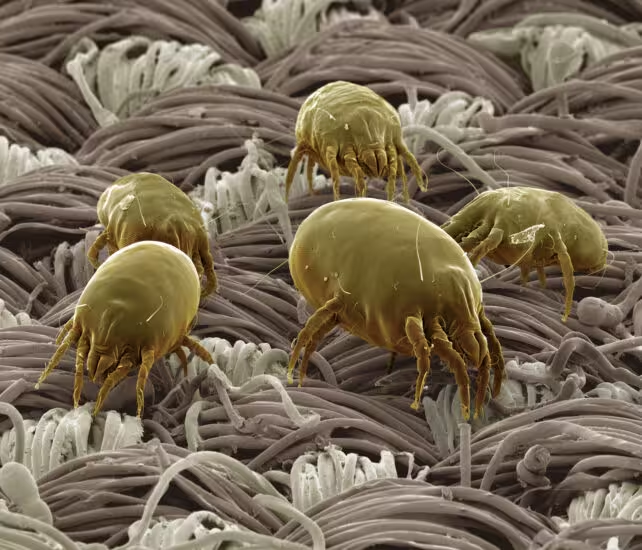5 Minutes
The Overlooked Science Behind Bed Hygiene
Most people spend about a third of their lives sleeping, but the science behind our bedding's cleanliness is often underestimated. While the focus is frequently on achieving adequate rest, creating a healthy sleep environment plays a crucial role in our physical and mental wellbeing. Modern microbiology research has illuminated exactly what accumulates in our beds and how often we should be washing our sheets, pillowcases, and other bedding for optimal health.
What Happens in Your Bed: The Microbial Ecosystem
Every night, as we slip between the sheets, our bodies naturally shed hundreds of thousands of dead skin cells. Even after a thorough evening shower, humans secrete oils (via sebaceous glands) and can perspire up to half a liter during sleep. Skin serves as a host to millions of bacteria and fungi, many of which transfer onto our bedding with every movement.
Although fresh perspiration is odorless, skin-dwelling bacteria such as staphylococci metabolize sweat and oils, producing compounds responsible for unpleasant morning body odors. Moreover, throughout the day, hair and skin accumulate particles like dust, pollen, and environmental pollutants, all of which migrate into our beds and contribute to allergic reactions, diminished indoor air quality, and increased respiratory risks.

Unseen Inhabitants: Dust Mites, Fungi, and Allergens
The shed skin particles are a primary food source for dust mites, microscopic arthropods thriving in blankets, sheets, and mattresses, particularly where warmth and moisture abound. Although dust mites themselves are not harmful, their waste products are potent allergens implicated in conditions such as asthma, eczema, and allergic rhinitis. A study from the University of Manchester has found significant levels of dust mite allergen in over 80% of beds examined globally.
Fungal species, including Aspergillus fumigatus, have also been detected in used pillows and mattresses. For immune-compromised individuals, such fungi can lead to severe lung infections. Additionally, if you sleep with pets, the microbial and allergen burden is magnified—their fur, dander, and occasional dirt or fecal matter make more frequent cleaning imperative.
Expert Recommendations: Optimal Bedding Cleaning Frequencies
Sheets and Pillowcases
- Frequency: At least once a week; every 3-4 days if you sweat heavily, have been ill, or sleep with pets.
- Reason: Regular laundering removes sweat, oils, microscopic organisms, allergens, and dead skin.
- Best Practice: Use water at 60°C (140°F) or higher with a quality detergent to destroy bacteria and dust mites. Tumble drying or ironing adds extra sanitization. For pillows, periodic freezing for at least 8 hours can force dust mites into dormancy.
Mattresses
- Frequency: Vacuum every week and air out every few days.
- Reason: Mattresses harbor moisture and warmth, providing an ideal environment for mites.
- Hygiene Tip: Invest in a plastic or allergen-blocking mattress protector and consider replacement every 7 years.
Pillow Interiors
- Frequency: Every 4-6 months, always check the manufacturer’s care label.
- Reason: Internal fillings can foster bacterial and mold growth.
- Method: Wash and thoroughly dry to prevent residual moisture and subsequent fungal proliferation.
Blankets and Duvet Covers
- Frequency: Every 2 weeks, or more frequently if pets use your bed.
- Reason: These articles trap skin debris, sweat, and dust.
- Protocol: Wash at high temperatures, subject to fabric care instructions. Treating these like towels helps maintain hygiene.
Duvets
- Frequency: Every 3-4 months, adapted based on pet or child co-sleeping.
- Reason: Duvets accumulate oils and mite waste even when covered.
- Approach: Most duvets can be machine washed; otherwise, professional cleaning is recommended.

The Health Case for Frequent Washing
Though bedding often appears clean, research consistently shows it’s a hotspot for microbial life, allergens, and unseen irritants. A 2022 YouGov survey found only 28% of people in the UK wash their sheets weekly, while some admitted to going eight weeks or more between washes—a duration that enables significant microbe and allergen buildup, contributing to poor sleep quality and potential health problems.
Routine cleaning breaks this cycle, removing biological contaminants and lowering the risk of allergic reactions, infections, and respiratory issues. Cleaner bedding can also positively impact how well you sleep, which in turn influences heart health, cognitive performance, and mood regulation, according to ongoing research from institutions like the National Institutes of Health.
Conclusion
Washing your bedding is about much more than maintaining a fresh-smelling bedroom—it is a science-backed strategy for safeguarding personal health. Regular laundering eradicates bacteria, fungi, dust mites, and atmospheric pollutants, ensuring your sleep environment remains hygienic and supportive of optimum rest. As our understanding of the microbiome and its health implications continues to evolve, prioritizing clean bed linens stands out as a simple yet powerful step in personal wellness and disease prevention. For quality sleep and better health, follow the science: change your sheets consistently, deep clean your bedding, and enjoy sweet, healthy dreams.



Comments